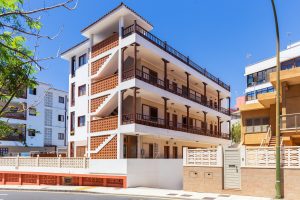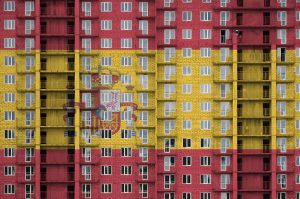
Prices to buy and rent increased in Q1
The first quarterly figures for property sales in Spain show an increase in the price of second-hand housing of 2.5%, and an annual increase of 7.4%. This brings the average cost per square metre to 2,259 euros.
“Home purchases in Spain continue to go through a period of high demand while waiting for a possible drop in interest rates. There is a large gap in demand with respect to supply, which causes price tensions. In fact, the large year-on-year growth indicates a warming of the price rather than a trend towards moderation. As long as demand continues to be intense, fuelled by dissipating uncertainty at the macroeconomic level and by a resilient labour market, we will continue to see activity in the market, which will keep prices rising,” explained María Matos, spokesperson for Fotocasa.
Autonomous Communities
Within the autonomous communities, the first quarter of 2024 showed 14 quarterly increases in the cost of used homes for sale in Spain. The Community with the highest quarterly increase was Madrid with 6.4%, followed by the Canary Islands (5.9%), Andalusia (3.8%), the Balearic Islands (3.1%), Valencian Community (3.0%), Murcia (2.8%), Catalonia (2.4%), Cantabria (2.2%), Basque Country (1.5%), Extremadura (1.2%), Castilla y León (1.1%), Galicia (1.1%), Asturias (0.5%) and Castilla-La Mancha (0.2%). Those registering a quarterly decrease were communities of La Rioja (-0.8%), Aragón (-1.2%) and Navarra (-2.5%).
Ranking the prices by communities, the Balearic Islands and Madrid show the highest prices, and exceed the barrier of 3,000 euros, specifically Madrid is highest with 4,008€ p/m², the Balearic Islands with 3,968€ p/m² and the Basque Country with 3,139€ p/m². They are followed by the communities of Catalonia (2,827€ p/m²), the Canary Islands (2,563€ p/m²), Andalusia (2,070€ p/m²), Navarra (2,012€ p/m²), Cantabria (1,954€ p/m²), Valencian Community (1,810€ p/m²), Galicia (1,739€ p/m²), Aragón (1,725€ p/m²), Asturias (1,666€ p/m²), La Rioja (1,656€ p/m²), Castilla y León (1,498€ p/m²), Region of Murcia (1,344€ p/m²), Extremadura (1,206€ p/m²) m2 and Castilla-La Mancha (1,204€ p/m²).
Rental Costs
The first quarter of 2024 also saw an increase in the cost of homes for rent in Spain, with prices rising 4.2%, and increasing 7.3% compared to the same period of the previous year. This brings the average cost per square metre to €12.27, the first time the cost has breached €12 since 2006.
“The cost of renting once again sets a price record in Spain. Since 2006, the rental cost has never exceeded €12 p/m². This shows how the rental prices have risen sharply again after a brief period of slight moderation. However, the most shocking thing is this increase of more than 7% year-on-year, which adds to the 10.2% that already grew last February 2023. That is, the market continues to heat up to worrying levels. This situation highlights the critical scenario of rising prices in which the main culprit is the imbalance between supply and demand,” explained María Matos.
Renting by Autonomous Community
Looking at rental prices compared to a year ago, we see that all communities increased the year-on-year price in February. In eight communities, double-digit increases were seen, specifically in La Rioja (15.2%), Madrid (15.0%), the Balearic Islands (14.4%), Valencian Community (13.9%), Cantabria (12.8%), Asturias (11.3%), the Canary Islands (10.8%) and Castilla-La Mancha (10.0%). They are followed by the regions of Andalusia (8.9%), Galicia (8.7%), the Basque Country (8.2%), Extremadura (7.8%), Castilla y León (7.6%), Navarra (7.3%), Catalonia (6.1%), Aragon (5.2%) and Region of Murcia (8.1%).
In February 2024, nine communities already exceed the maximum rental prices per square meter per month. The areas of Spain with the highest prices in the entire historical series are: Extremadura (€6.67 p/m² per month), Castilla y León (€8.64 p/m² per month), Galicia (€8.88 p/m² per month), Asturias (€9.56 p/m² per month), Andalusia (€10.35 p/m² per month), Valencian Community (€11.73 p/m² per month), Catalonia (€16.45 p/m² per month), the Balearic Islands (17.19 p/m² per month) and Madrid (€18.29 p/m² per month).
Balearic Islands are Most Expensive
Regarding the ranking of Autonomous Communities with the most expensive housing price to rent a home in Spain, in the first places are Madrid and the Balearic Islands, with prices of €18.29 p/m² per month and €17.19 p/m² per month, respectively. They are followed by seven more communities with prices higher than €10.00 p/m² per month and they are: Madrid (€18.29 p/m²), Balearic Islands (€17.19 p/m²), Catalonia (€16.45 p/m²), Basque Country (€15.26 p/m²), Canary Islands (€12.91 p/m²), Cantabria (€12.01 p/m²), Valencian Community (€11.73 p/m²), Navarra (€11.31 p/m²) and Andalusia (€10.35 p/m²).












